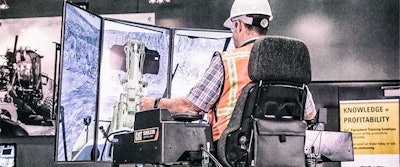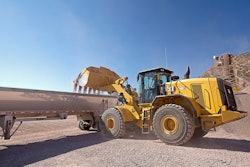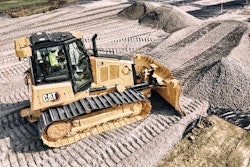
When we talk to contractors about their biggest challenges, we get all kinds of answers. Rising fuel costs. Tighter project deadlines. Stricter regulatory requirements. But the one that seems to be on everybody’s mind — and has been for some time now — is how to deal with the shortage of skilled equipment operators.
Unfortunately, experienced talent isn’t just going to appear out of thin air. It takes time and energy for new operators to get up to speed and start producing at levels comparable to their long-time counterparts. But there is something you can do to help speed up the process: Simulate it.
Real experience without the risk
Equipment simulators bring the benefits of virtual reality to your training program. Cat simulators, for example, feature authentic Cat controls, adjustable seats and realistic operator station movement that replicate the job-site environment, and monitors displaying various training exercises developed by Cat operator experts.
Simulator training is a great way to give operators real, hands-on experience without any risk to your machines, people or projects. Does it replace time in the seat? No. But it can make the transition to working in an actual machine much safer, smoother and faster by helping new operators get over any initial hesitations or fears.
Seamless transition to the field
In a simulator, operators use the exact same controls they’ll eventually put to work in the machine. That gives them a chance to get familiar — and comfortable — with how levers, joysticks, pedals and buttons work before there’s anything on the line.
You can also use simulator training to teach new employees the right way to do things on your job sites. Say you require operators to perform a lot of slot dozing. You can train them on the simulator to start from front to back for the most efficiency.
No time away from productive work
Think about it: If you’re training operators in your actual equipment, you’re probably not getting much productive work done. But you are burning fuel, adding service hours to your machines and putting wear on components. You could be risking damage or rework. And you’re potentially taking a machine off the job where it could be earning you money. Training operators on an equipment simulator eliminates those expenses and risks.
Something for all experience levels
Simulators aren’t just for new employees. You may have operators with decades of experience, but if you’ve recently upgraded your equipment, those machines and many of their features are new to them. They’ll benefit from time in the simulator, too.
Does an equipment simulator seem like too big an expense for your operation? You don’t have to buy one. At Caterpillar, we offer simulator training at our Demonstration & Learning Centers. You can even rent Cat simulators — and you can switch between machine models on just one simulator. Watch these videos to see how it works.



















